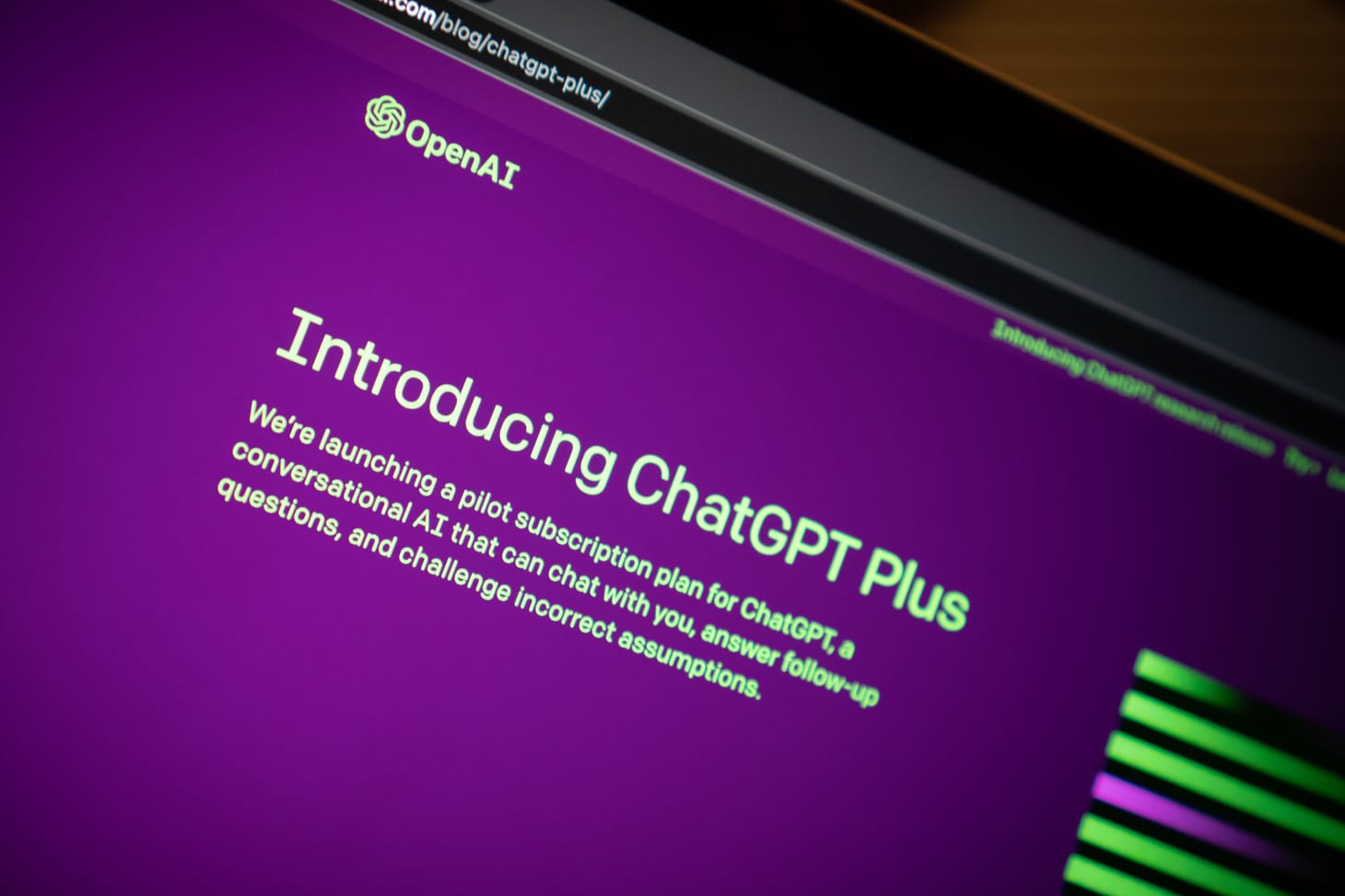5 ways to implement ChatGPT in your daily life
How you can save almost 3h / week by using AI.

Everybody is using ChatGPT. But 99% of people are still STUCK in beginner mode.
Make. It. Stop.
My LinkedIn feed has been plastered with posts like this, all using the same hook. I can’t see it anymore.



However … ChatGPT actually is kinda powerful.
I’m by no means an AI expert (it’s not my main field of interest), but based on many recent conversations I’ve had, I feel like I’m using ChatGPT much more than most others.
So today, I want to show you a few prompts that will save you time and make your life easier.
[1] Meal Planning
Always wanted to get a nutritional coach, but they were too expensive? I feel you.
Not anymore, though. I’ve been using ChatGPT for a few months now to plan my meals. Use this prompt:
“You are a personal chef. Please generate a meal plan for this week. The plan should include 2 meals, one of them a pasta dish and the other something I can make on my barbecue. The recipes should contain meat and be rich in vegetables. Please provide recipes in European measurements and adjust for four servings. The recipes should take no more than 30 minutes to prepare.”Next, it’ll output a few recipes. If you like them, great. If you don’t, you can always adjust them with something like:
“I don't really like the Quinoa salad. Could you provide a pasta recipe instead (and replace the chicken with another protein, as we already have chicken in the stir fry)?”Once the recipes are to your liking, the magic happens:
“Outstanding, thank you. Could you turn these recipes into a grocery shopping list? Please leave out common things like olive oil, salt and pepper, as I have these around already.”And that’s it. Takes like 5 minutes, and your weekly shopping is ready.
You can also try:
- Different cuisines (this week, I asked for Italian, Mexican, and Uzbek)
- Different tools (we recently bought a slow cooker, so I’ve been experimenting with that)
- Different styles (vegetarian, paleo, keto, …)
→ Estimated time savings: 45 minutes / week
[2] Writing & Research Assistant
Why pay a research assistant if you could use ChatGPT instead?
I tried this for my article on Work-Play Balance. I had a few research questions, so I turned to my AI assistant:
“I'm currently writing an article about having hobbies. You're my research assistant. What are some scientifically proven benefits of having a hobby?”The output was solid, but didn’t have sources:
“Cool - could you provide some sources for the benefits above?” (Note that you need ChatGPT Plus in order to browse the web.)
Once I had written my first draft of the article, I went back and asked to make it more concise:
“Here's my article draft. I'm already quite happy with it, but it's not entirely smooth yet. Could you rewrite it in my style so readers walk away and feel like they've learned something?”While the result wasn’t quite on point, a few phrasings were awesome, so I included them in my article.
The result was a much better article than I could’ve written on my own.
→ Estimated time savings: 30 minutes / week (if you write weekly, more if you write daily)
[3] Brainstorming
I recently published a post about “New Month’s Resolutions”, and I wanted a few cool ideas:
“Like a new year's resolution is a resolution for a whole year, a new month's resolution is something you want to (not) do for a whole month.
Please come up with 10 examples for a new month's resolution for June related that will increase mental and/or professional performance.”I wasn’t quite content with the output, so I pushed further:
“Not bad, but these are all fairly generic. Can you come up with 10 more ideas that are a little less out-of-the-box? An example would be to not use Instagram for one month.”The output was better. But you can always push further:
“Much better. Can you get even crazier and generate 5 more?”Which lead to the recommendation of “dressing for success at home”, “dance breaks” and “3D modelling”, stuff I would’ve never come up with.
You can use this for any field, really.
→ Estimated time savings: 45 minutes / week
[4] Writing Email Subject Lines
Subject Lines are a hassle - but they’re important. If your subject line doesn’t hit, your email won’t be opened. ChatGPT can help:
“Here’s an email to a business partner. Please come up with a subject line that is short, concise, and likely to increase open rate.” Since there are lots of articles on the internet on optimizing opening rates, ChatGPT’s model is trained well on this matter.
→ Estimated time savings: 15 minutes / week
[5] Answering questions that Google cannot answer
Sometimes, it’s hard to find the right information on Google. So try ChatGPT instead. For example:
“Which steps do I have to go through if I want to change the name of a legal entity in Belgium?”Of course, this isn’t legal advice, but it pointed me in the right direction much quicker than a long, extended Google research.
And you can ask anything:
- How do I get German citizenship?
- What’s is the unique value proposition of Company X?
- Which Greek island is best if I want to avoid American and British tourists?
Always be sure to check the sources, as the data may not be 100% accurate.
→ Estimated time savings: 30 minutes / week
—
With these five use cases alone, I manage to save 2:45h every week. And here, we’re still just scratching the surface. I’ve also used ChatGPT to:
- Summarize a list of activities for a work certificate
- Write emails in languages I don’t speak well
- Figure out the right Excel formula
- Review my website to improve conversion rates
- Create a landing page for a wine brand called “BROdeaux” (for the road to “Unparalleled Masculinity”, according to ChatGPT)
- Research potential business partners
… and much more
—
Action item recap:
- Get ChatGPT Plus
- Try a few of the prompts here
- Play around with more stuff
ChatGPT is a powerful tool. Use it. Save time. Unlock creativity.
And don’t be stuck in Beginner mode. Or something like that.
That’s it for this edition of International Generalist. Thanks for tuning in and reading!
If you enjoyed this, please ask yourself: which one person that you know would most benefit from reading this newsletter? The number one way to support me is to share this with others aspiring to become more effective in their personal and professional lives.
Who’s behind International Generalist?
I’m Dominik, and every day, I try to figure out how to become a tiny bit more effective. Then, I share some of the lessons learned here.
When I’m not writing, I build the international business for Sdui - the Leading European SchoolOS -, play Lacrosse, lift weights and enjoy draft beers.
Here’s how else I can help you:
- Book a 1:1 meeting to discuss how you can manage your time better - please email me
- Read the newsletter archive for more actionable nuggets
- Connect on LinkedIn or Twitter for daily doses of insights
- Send me a question, so I can answer it in the newsletter or in a long-form blog post
See you in two weeks!
Much love
Dominik
Dominik Nitsch Newsletter
Join the newsletter to receive the latest updates in your inbox.


